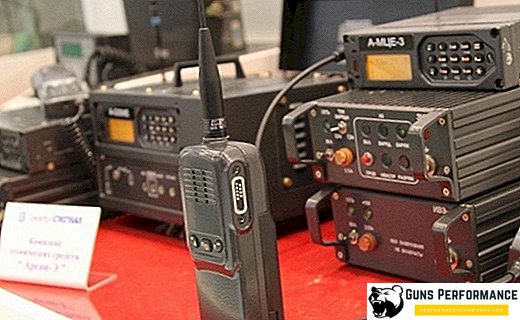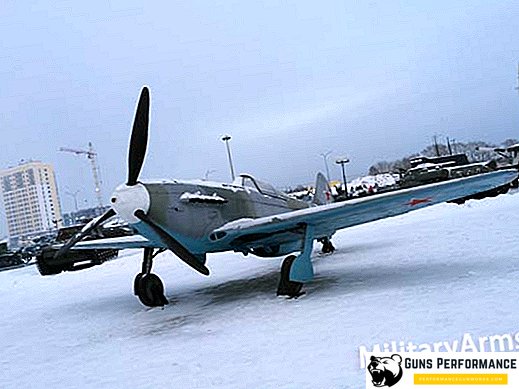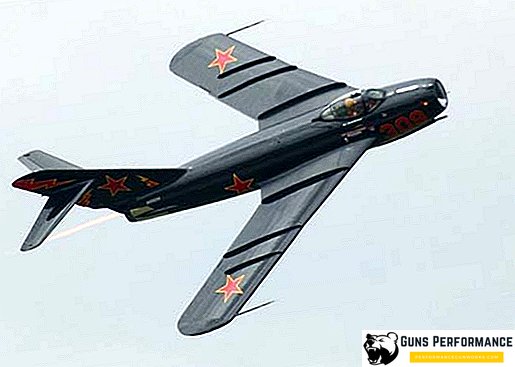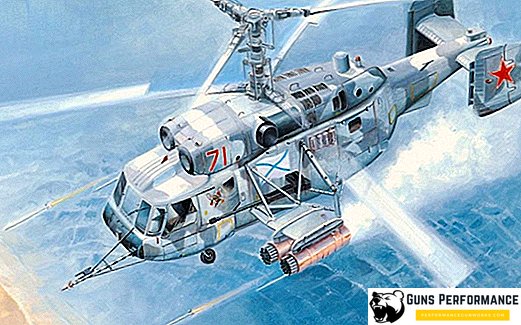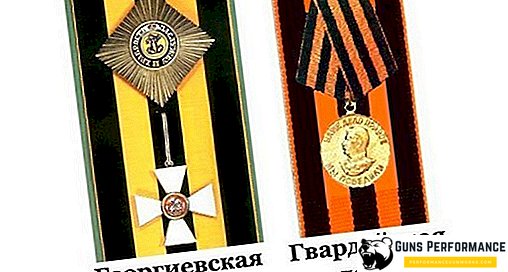The strategic bomber TU-160, the so-called "White Swan" or Blackjack (baton) in NATO terminology, is a unique aircraft. This is the personification of the power of modern Russia. The TU-160 has excellent technical characteristics: it is the most formidable bomber in the world capable of carrying cruise missiles, as well. The largest and most aesthetic supersonic aircraft in the world. It was developed in the 1970-1980s at the Tupolev Design Bureau and equipped with a variable sweep wing. In service with the TU-160 since 1987.

The TU-160 bomber was a response to the AMSA program (“Developed Manned Strategic Aircraft”) of the United States, under which the well-known B-1 Lancer was created. The TU-160 missile carrier, in almost all characteristics, was significantly ahead of its main competitors, including the notorious Lancer. The speed of the TU-160 is 1.5 times higher, the maximum flight range and the combat radius are just as much, and the engine thrust is almost twice as powerful. When the creators of the "invisible" B-2 Spirit sacrificed everything that was possible, for the sake of the stealth of the aircraft, including range, flight stability and vehicle payload.
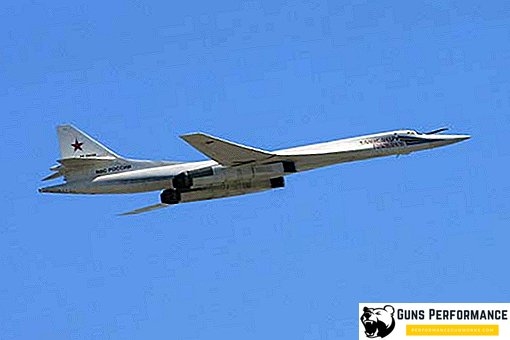
Quantity and cost of TU-160 "White Swan"
The long-range missile carrier TU-160 is a “piece” and expensive product with unique technical characteristics. In total, only 35 of these aircraft were built, while the flightable ones have so far less. Nevertheless, the TU-160 remains the thunderstorm of enemies and the pride of Russia. This aircraft is the only product that has received its own name. The planes are named after sports champions ("Ivan Yarygin"), designers ("Vitaly Kopylov"), heroes ("Ilya Muromets") and of course, pilots ("Pavel Taran", "Valery Chkalov" and others).

After the collapse of the USSR, 19 bombers of this type remained in Ukraine, at the Priluki base. However, these machines in operation were too expensive for this country, and they turned out to be simply not needed by the new Ukrainian army. These 19 TU-160 Ukraine offered Russia to exchange for IL-76 (in the ratio of 1 to 2) or for the cancellation of gas debt. But for Russia it turned out to be unacceptable. In addition, Ukraine was affected by the United States, in fact, forced to destroy 11 Ukrainian TU-160. But eight aircraft were nevertheless transferred to Russia for the partial cancellation of gas debt.
As part of the Air Force in 2013, there were 16 Tu-160 bombers. For Russia, this is an exorbitantly small amount, but the construction of new ones would cost a huge amount. Therefore, it was decided to modernize 10 bombers from the existing Tu-160M standard. Long-range aviation in 2018 should receive 6 upgraded TU-160. However, in modern conditions, even the modernization of the existing TU-160 will not help to solve defense tasks. Therefore, there were plans to build new missile carriers. The resumption of production of aircraft classification Tu-160M / Tu-160M2 is expected no earlier than 2023

In 2018, Kazan decided to consider the possibility of starting production of the new TU-160 at KAZ facilities. These plans were formed as a result of the formation of the current international situation. This is a most difficult, but solvable task: over the years some technologies and personnel have been lost. The cost of one missile carrier TU-160 is about $ 250 million.
The history of the TU-160
The task of designing the missile carrier was formulated back in 1967 by the USSR Council of Ministers. The work involved the design offices of Myasishchev and Sukhoi, which after a few years offered their options. These were projects of bomber capable of developing supersonic speed to overcome air defense systems. The Tupolev Design Bureau, which had experience in developing Tu-22 and Tu-95 bombers, as well as a Tu-144 supersonic aircraft, did not participate in the competition. The winner was eventually recognized by the Myasishchev Design Bureau, but the designers did not even have time to really celebrate the victory: the government soon decided to close the project in the Myasishchev Design Bureau. All documentation on the M-18 was transferred to the Tupolev Design Bureau, which connected to the competition with "Product-70" (the future TU-160 aircraft).
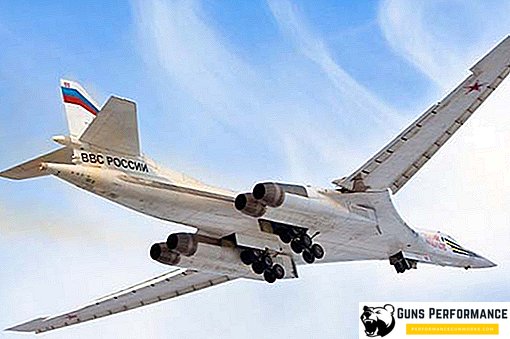
The following requirements were placed on the future bomber:
- the flight range at an altitude of 18,000 meters at a speed of 2300-2500 km / h - within 13,000 km;
- the aircraft must approach the target at subsonic cruising speed, overcome enemy air defenses - at cruising speed near the ground and in supersonic altitude mode.
- the total mass of the combat load should be 45 tons.
The first flight of the prototype (Item "70-01") was carried out at the Ramenskoye airfield in December 1981. The product "70-01" was piloted by test pilot Boris Veremeev with his crew. The second copy (product "70-02") did not fly, it was used for static tests. Later, the second plane connected to the tests (product "70-03"). The TU-160 supersonic bomber carrier was launched into serial production in 1984 at the Kazan Aviation Plant. In October 1984, the first production car rose into the air.
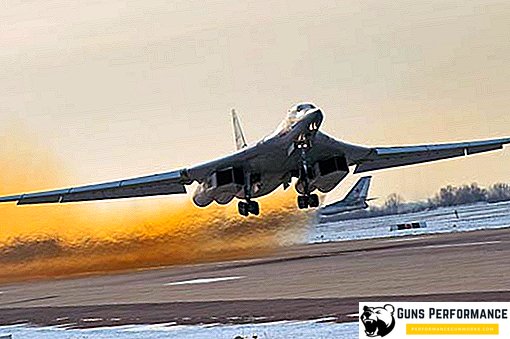
Technical characteristics of TU-160
- Crew: 4 people
- Length 54.1 m
- Wingspan 55.7 / 50.7 / 35.6 m
- Height 13.1 m
- Wing area 232 m²
- Empty weight 110,000 kg
- Normal take-off weight of 267,600 kg
- Maximum take-off weight of 275,000 kg
- Type of engines 4 × TRDDF NK-32
- Thrust maximum 4 × 18 000 kgf
- Traction on afterburner 4 × 25 000 kgf
- Fuel weight 148,000 kg
- Top speed at an altitude of 2230 km / h
- Cruising speed 917 km / h
- Maximum range without refueling 13,950 km
- Practical range without refueling 12,300 km.
- Combat radius 6000 km
- Flight duration 25 hours
- Practical ceiling 21,000 m
- Rate of climb 4400 m / min
- Run length / run 900/2000 m
- Load on wing with normal take-off weight of 1150 kg / m²
- Load on wing with maximum take-off weight of 1185 kg / m²
- Thrust-to-weight ratio at a normal take-off mass of 0.36
- Thrust-to-weight ratio with a maximum take-off mass of 0.37.
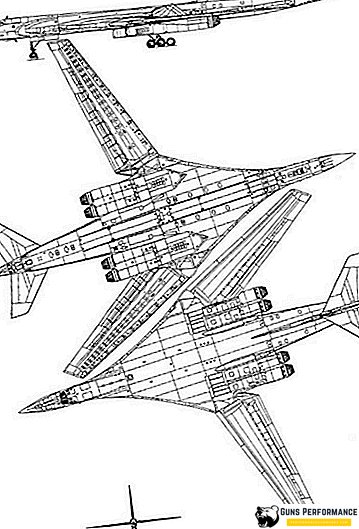
Design features TU-160
- The White Swan aircraft was created with extensive use of approved solutions for the vehicles already built in the design bureau: the Tu-142MS, Tu-22M and Tu-144, and some units, units and part of the systems went into the aircraft without changes. Compositions, stainless steel, aluminum alloys V-95 and AK-4, titanium alloys VT-6 and OT-4 are widely used in the design of the White Swan.
- The White Swan aircraft is an integral low-wing aircraft with a variable sweep wing, full-turning keel and stabilizer, three-bearing landing gear. The wing mechanization includes double-slit flaps, slats, flaperons and spoilers are used for roll control. Four engines NK-32 are mounted in the bottom of the fuselage in pairs in nacelles. As an autonomous unit is used VSU TA-12.
- The glider has an integrated circuit. Technologically, it is composed of six main parts. A radar antenna is installed in the non-hermetic nose section in the radio transparent radome, behind it is the non-hermetic compartment of radio equipment. The central part of the bomber of 47.368 m length includes the fuselage, which includes the crew cabin and two cargo compartments. Between them is located the fixed part of the wing and the caisson compartment of the center section, the tail part of the fuselage and the engine nacelle. The cockpit is a single pressurized cabin, where in addition to crew jobs, the aircraft’s electronic equipment is located.
- Wing on a variable sweep bomber. With a minimum sweep, it has a span of 57.7 m. The control system and the swivel unit are generally similar to the Tu-22M, but they are reinforced. Wing caisson design, mainly made of aluminum alloys. The turning part of the wing moves from 20 to 65 degrees along the leading edge. Three-section double-slot flaps are installed along the rear edge, and four-section slats along the leading edge. For roll control, there are six section interceptors, as well as flappers. The inner cavity of the wing is used as fuel tanks.
- The aircraft is equipped with an automatic, onboard electrical remote control system with duplication of mechanical wiring and fourfold redundancy. Management - dual, handles are installed, but not handwheels. The aircraft is controlled by pitch with the help of a full-turning stabilizer, at the rate of operation - by a full-turning keel, and by the roll - by interceptors and flaperons. The navigation system is a two-channel K-042K.
- "White Swan" - one of the most comfortable combat aircraft. During the 14-hour flight pilots have the opportunity to get up and stretch their legs. On board there is a kitchen with a wardrobe that allows you to heat food. There is a toilet, which was previously not on strategic bombers. It was around the bathroom during the transfer of the aircraft to the military there was a real war: the pilots did not want to take the car, because the construction of the bathroom was imperfect.
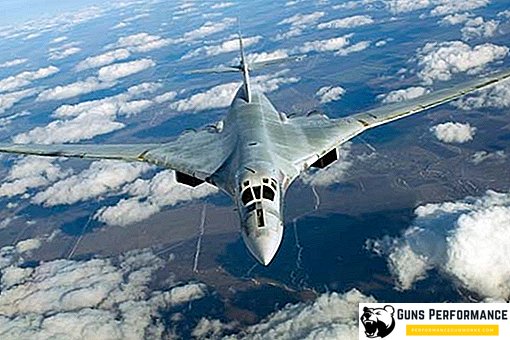
Armament TU-160 "White Swan"
Initially, the TU-160 was built as a carrier of long-range cruise missiles with nuclear warheads designed for delivering massive strikes on the squares. In the future, it was envisaged to expand and modernize the range of transportable ammunition, as evidenced by stencils on the casement panels with options for hanging a huge range of goods.

The TU-160 is armed with strategic cruise missiles Kh-55SM, which are used to destroy stationary targets that have predetermined coordinates; they are entered before the bomber departs to the missile’s memory. The rockets are arranged in six pieces on two launch drum sets MKU-6-5U, in the cargo compartments of the aircraft. The composition of weapons for destruction at a short range can be included hypersonic aeroballistic missiles X-15S (12 for each ISU).
After appropriate conversion, the bomber can be equipped with free-fall bombs of various calibers (up to 40,000 kg), including one-time bomb cassettes, nuclear bombs, sea mines and other weapons. The composition of the weapons of the bomber in the future is planned to significantly expand through the use of high-precision cruise missiles of the newest generation X-101 and X-555, which have an increased range.


